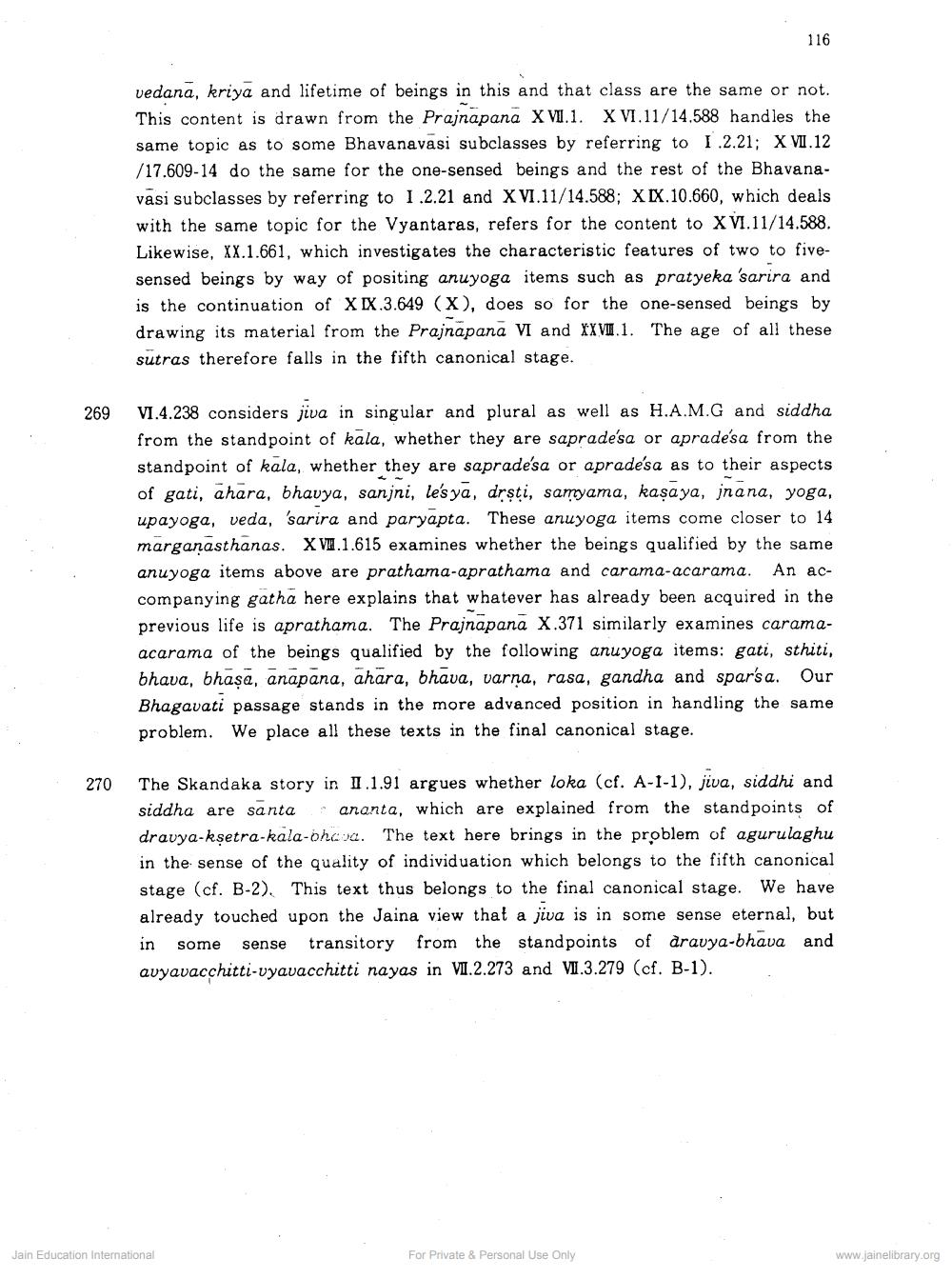________________
270
vedana, kriya and lifetime of beings in this and that class are the same or not. This content is drawn from the Prajnapana XVII.1. XVI.11/14.588 handles the same topic as to some Bhavanavasi subclasses by referring to I.2.21; XVII.12 /17.609-14 do the same for the one-sensed beings and the rest of the Bhavanavasi subclasses by referring to 1.2.21 and XVI.11/14.588; XIX.10.660, which deals with the same topic for the Vyantaras, refers for the content to XVI.11/14.588. Likewise, XX.1.661, which investigates the characteristic features of two to fivesensed beings by way of positing anuyoga items such as pratyeka 'sarira and is the continuation of XIX.3.649 (X), does so for the one-sensed beings by drawing its material from the Prajnapana VI and XXVII.1. The age of all these sutras therefore falls in the fifth canonical stage.
269 VI.4.238 considers jiva in singular and plural as well as H.A.M.G and siddha from the standpoint of kala, whether they are sapradesa or apradesa from the standpoint of kala, whether they are sapradesa or apradésa as to their aspects of gati, ahara, bhavya, sanjni, lesya, dṛsti, samyama, kaṣaya, inana, yoga, upayoga, veda, sarira and paryapta. These anuyoga items come closer to 14 marganasthanas. XV.1.615 examines whether the beings qualified by the same anuyoga items above are prathama-aprathama and carama-acarama. An accompanying gatha here explains that whatever has already been acquired in the previous life is aprathama. The Prajnapana X.371 similarly examines caramaacarama of the beings qualified by the following anuyoga items: gati, sthiti, bhava, bhasa, anapana, ahara, bhava, varna, rasa, gandha and sparsa. Our Bhagavati passage stands in the more advanced position in handling the same problem. We place all these texts in the final canonical stage.
116
The Skandaka story in II.1.91 argues whether loka (cf. A-1-1), jiva, siddhi and siddha are santa ananta, which are explained from the standpoints of dravya-kṣetra-kala-bhava. The text here brings in the problem of agurulaghu in the sense of the quality of individuation which belongs to the fifth canonical stage (cf. B-2). This text thus belongs to the final canonical stage. We have already touched upon the Jaina view that a jiva is in some sense eternal, but in some sense transitory from the standpoints of dravya-bhava and auyavacchitti-vyavacchitti nayas in VII.2.273 and VI.3.279 (cf. B-1).
Jain Education International
For Private & Personal Use Only
www.jainelibrary.org




